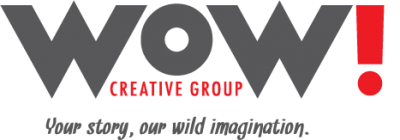![]()
By Wayne Brown
One of the most common questions I get asked a lot is which social media platforms should a company use. There are so many these days and managing them is a full-time job. However, every business model is different and there really is no cookie-cutter approach. As long as the platforms you select bring engagement and actionable results, you have a great opportunity to create brand awareness and turn your social communities into customers. Here are my minimum recommendations, which I feel are essential for any business wanting to connect with a qualified audience.
Let’s start with Facebook. Facebook is still one of the most widely used social media platforms for businesses today with more than 1.94 billion users worldwide. Since a large majority of people are using it, there’s a good chance your customers and prospects are, too.
Out of all the social media platforms, Facebook has the best and most strategic advertising options, and is a great investment when it comes to social media advertising. Clicking a hashtag on Facebook will bring you to a separate page with related posts that are visible to you based on the various users’ privacy settings.
- Facebook
1.94 billion users worldwide
88% of 18–29 year olds use Facebook
84% of 30–49 year olds use Facebook
72% of 50–64 year old use Facebook
62% of 65+ year old use Facebook
Source: Pew Social Media Update 2016
Next is Instagram, which is owned by Facebook. This is a social media platform that is completely photo-friendly and continues to grow, especially with 18-29 year olds. It’s a platform that seems to be much “quieter” than Facebook and Twitter. For a business, Instagram can be successful when you post quality photos. If you’re not sure if this platform is right for your business, I always suggest taking yourself out of the “picture” (no pun intended) and think through the eyes of your customers and whether they would likely engage in photos of your business.
Hashtagging on Instagram will take you to a separate page with photos similar to the ones you’ve posted.
- Instagram
700 million users worldwide
59% of 18–29 year olds use Instagram
33% of 30–49 year olds use Instagram
18% of 50–64 year olds use Instagram
8% of people 65+ use Instagram
Source: Pew Social Media Update 2016
With 1 billion users worldwide and 4 billion views per day, YouTube would be your best bet for posting and archiving your videos on your company channel. YouTube is a social media platform, although many businesses don’t realize this. It’s owned by Google and its SEO capabilities can drive traffic to your website. Also, Millennials prefer YouTube nearly twice as much over traditional TV.
One misconception businesses have about YouTube is that you don’t have to spend a ton of money on creating professional videos. While it’s important to have a few professional videos for your website, simply using your smartphone camera is enough to get your point across on a daily basis.
Hashtagging is typically done in the comments section, where you’ll be to click-thru to a page that has that particular hashtag in its title.
The platform that actually gave us the “hashtag” is Twitter, which provides a great way to create conversations with customers and prospects, while gaining a following. Using a hashtag allows users to tweet at your location, much easier than searching for your other social media platforms. Twitter is also great if your business is hosting an event because Twitter hashtags can easily track those conversations.
- 328 million users worldwide
36% of 18–29 year olds use Twitter
23% of 30–49 year olds use Twitter
21% of 50–64 year olds use Twitter
10% of 65+ year olds use Twitter
Nearly 79% of Twitter accounts are located outside of the US
Source: Pew Social Media Update 2016
Clients also ask me about LinkedIn. According to Pew Social Media Update 2016, 25% of all U.S. adults use LinkedIn, which continues to be popular with college graduates and high income earners. LinkedIn has evolved over the years and has become successful with its emphasis on publishing, where members can use this platform as a blogging platform. My problem with LinkedIn is that it’s not supposed to be “social” the way Facebook is because it is a business site, so you have to make sure your posts and blogs are specific to your business. You can’t talk about “those Yankees” if there’s no business action behind it. The other problem I have with business LinkedIn profiles is that most people want to connect with other people. A business brand, while it may have personality attributes, may not appear to be very human when other members are looking for conversations.
There are other platforms like Snapchat and Slideshare, which can be difficult for businesses to master, and like I said before, these are my minimum recommendations because they are effective and easy to use. Of course, none of these platforms will be effective without your amazing content, which comes from your photos, blogs, and videos.

